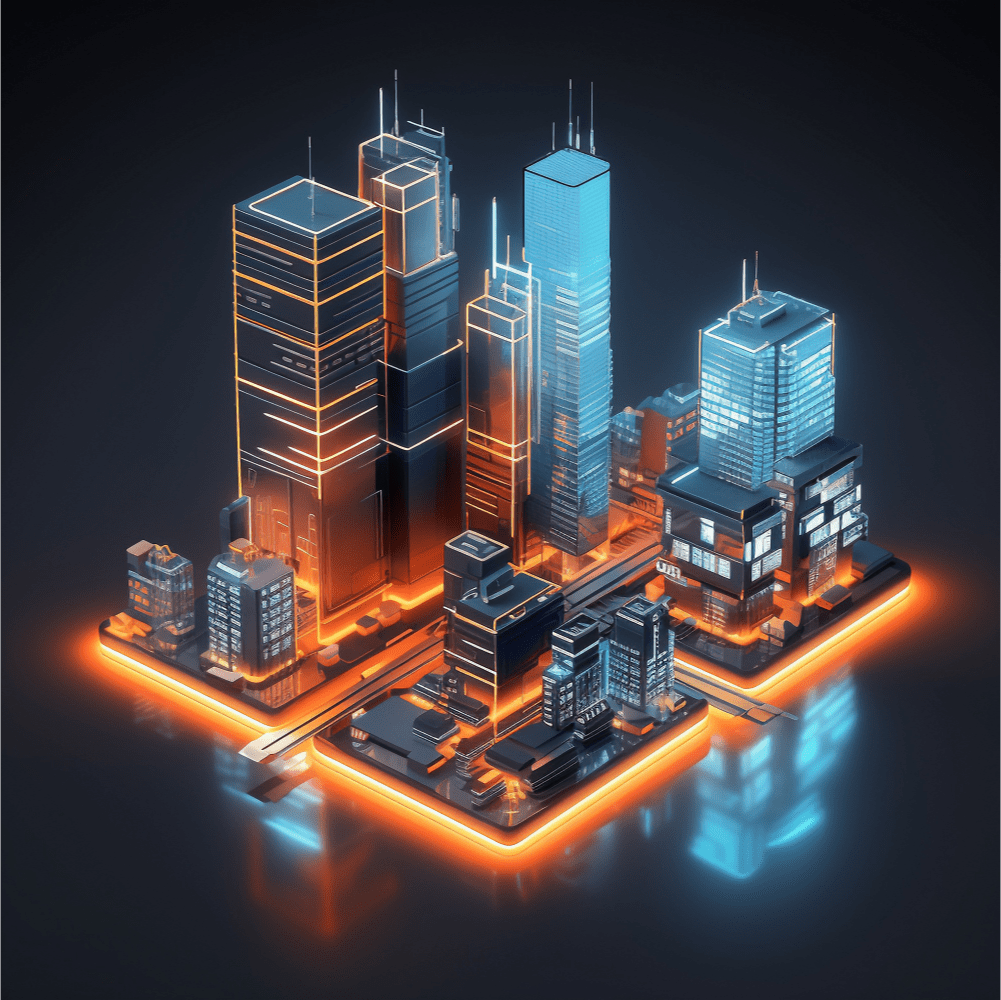Along with the now popular workplace management platforms, AI chats, and more, smart homes and cities will also become common. Integrated IoT networks are set to revolutionize city management by optimizing critical urban services through real-time data collection and analysis. An extensive network of sensors and devices in smart cities continuously gathers data on various aspects of city life, from traffic flow to energy consumption. For instance, IoT sensors can monitor vehicle and pedestrian traffic in traffic management, adjusting signal timings and traffic flow patterns to reduce congestion and improve safety.
The benefits of these IoT networks in intelligent cities extend beyond mere efficiency improvements. The real-time data collected offers invaluable insights into urban living patterns, enabling city planners and authorities to make informed decisions and quick responses to emerging issues. This proactive approach to city management means potential problems can be identified and addressed before they escalate, leading to a more responsive and adaptive urban environment.
Smart Transportation Systems and Reduced Congestion
Intelligent transportation systems, driven by advanced technologies, are set to revolutionize urban transport, significantly reducing congestion and pollution in intelligent cities. This includes dynamically adjusting bus and train schedules based on passenger demand, using apps to provide users with real-time updates on transit options, and deploying intelligent ticketing systems that streamline the passenger experience.
Moreover, the infrastructure in smart cities is increasingly accommodating electric and autonomous vehicles. Electric vehicle charging stations are becoming more widespread, encouraging the adoption of EVs, which are crucial to reducing urban air pollution. Once fully integrated, autonomous vehicles promise to improve traffic efficiency and safety significantly. Their ability to communicate with each other and traffic systems can reduce traffic jams and accidents caused by human error.

These vehicles also contribute to the more efficient use of road space, as they can travel safely at closer distances. Furthermore, integrating bike-sharing programs and developing safe cycling infrastructure promotes sustainable and healthy transportation alternatives. These innovations in intelligent transportation systems aim to reduce congestion and pollution and create a more accessible, efficient, and sustainable urban transport landscape, ultimately enhancing the overall quality of urban living.
Enhanced Public Safety with Smart Surveillance
Enhanced public safety is a crucial feature of smart cities, and intelligent surveillance systems are pivotal in achieving this. These systems encompass advanced cameras equipped with facial recognition technology, which can swiftly identify suspects and locate missing persons. Integrating these cameras into a city-wide network allows for comprehensive monitoring of public spaces, contributing to quicker response times in emergencies.
Predictive policing methods, another facet of intelligent surveillance, analyze data from various sources to forecast potential crime hotspots. This enables law enforcement to allocate resources more effectively and even prevent crimes before they occur. Using real-time surveillance data in coordinating responses to incidents, from traffic accidents to public disturbances, enhances urban areas’ overall safety and security.

Concerns revolve around the accuracy of these systems, especially in correctly identifying individuals from diverse backgrounds and the risk of unwarranted surveillance and profiling. There is a growing call for transparent regulations and strict oversight to ensure that deploying innovative surveillance technologies balances public safety with protecting individual privacy rights. This includes establishing precise data collection, storage, and usage guidelines and ensuring public awareness and consent.
As cities become more innovative and more surveilled, it is crucial to navigate these ethical and privacy considerations carefully, ensuring that the advancement in public safety does not come at the cost of fundamental personal freedoms.
Digital Inclusion and Access to Smart City Services
Digital inclusion is a critical aspect of innovative city development, ensuring that all residents have equitable access to the benefits of innovative city technologies. As cities adopt advanced digital infrastructures, from IoT networks to online municipal services, there’s a growing need to address the digital divide that can leave some community members behind. Initiatives to provide widespread internet access are fundamental in this regard.
Alongside internet access, digital literacy programs play a crucial role. These programs, often run in community centers and libraries, provide training and resources to help residents, especially the elderly and low-income groups, develop the skills needed to navigate digital platforms. This empowers them to use innovative city services effectively, from online bill payments and digital health services to accessing public transportation information.
Furthermore, ensuring that innovative city technologies are user-friendly and accessible to people with disabilities is imperative. This means designing websites, apps, and digital kiosks with features that accommodate various needs, such as screen readers for the visually impaired and simple, intuitive interfaces for those who need to be tech-savvy. City authorities must also engage with diverse community groups to understand their needs and challenges in accessing digital services. This engagement can inform inclusive policies and initiatives that cater to the entire urban population.
Urban Spaces and Community Engagement
Interactive urban spaces in intelligent cities transform how residents engage with their environment and each other. Central to this transformation are digital displays and interactive kiosks strategically placed in public areas such as parks, squares, and transportation hubs. These technologies provide real-time information on various subjects, from public transportation schedules and traffic updates to local events and emergency alerts. They also offer interactive maps and directories, helping residents and visitors navigate the city more effectively.
Furthermore, these digital installations often include features for feedback and reporting, enabling citizens to directly communicate with city management about issues like maintenance problems or service requests. This level of interaction not only enhances the convenience and accessibility of urban services but also fosters a sense of community and belonging among residents as they become active participants in improving their city.
Mobile apps are another tool reshaping community engagement in smart cities. These apps are a gateway to many urban services, allowing residents to pay for parking, report potholes, or book public facilities from their smartphones. Additionally, these apps often integrate social features, creating platforms where residents can share information, coordinate community activities, or engage in local initiatives.
By leveraging digital technologies to create more interactive and responsive urban environments, smart cities are enhancing the efficiency and convenience of urban living and nurturing a more connected and engaged community.




